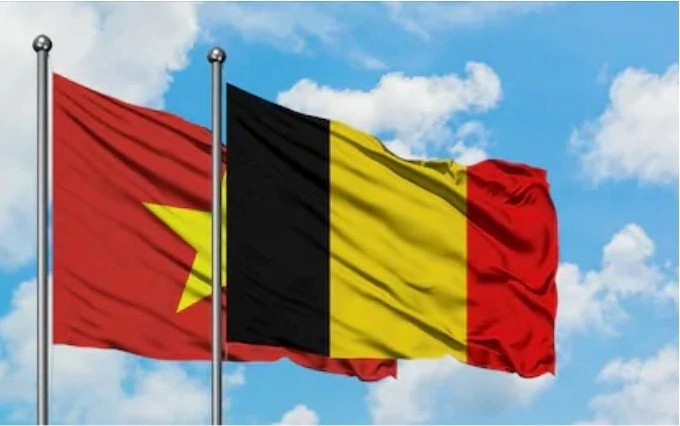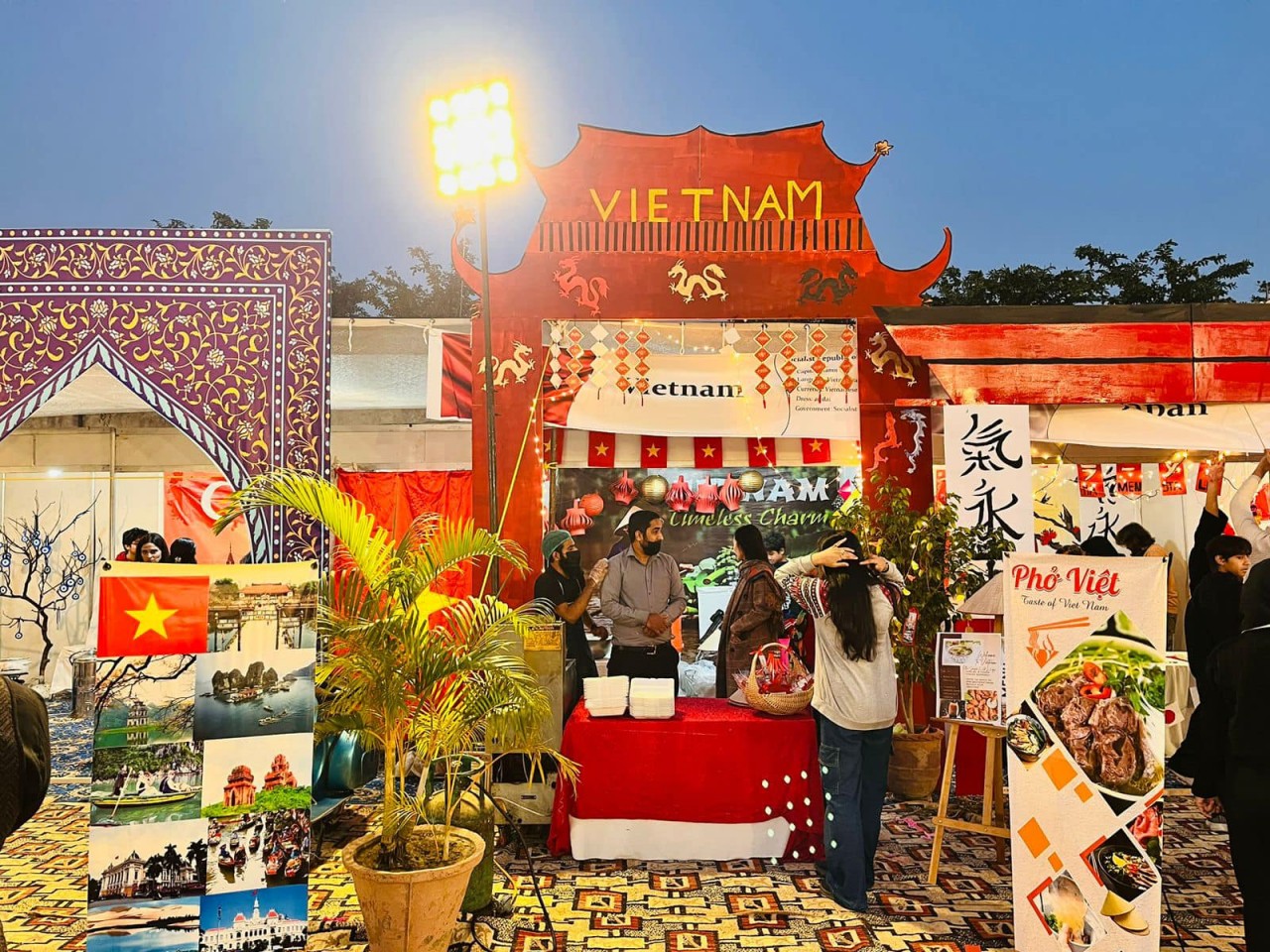TasteAtlas: 6 Traditional Vietnamese Foods Among The Best Snacks In Asia
Vietnamese cuisine is a delicate combination of many spices and fresh ingredients. It is diverse, rich, tasty, exotic, and different from region to region. Vietnamese cuisine is not only the dishes and recipes, but its unique culture.
Vietnamese cuisine, like many other Asian countries, emphasizes the balance between yin and yang, which is beneficial for the body. When preparing Vietnamese dishes, the cook will combine yin–cool ingredients with yang–hot ones to make a balance. A dish with “cool” properties is served with “hot” spices and vice versa.
Unlike Western cuisine where meat is a main ingredient or Chinese dishes with a bit excessive use of oil, Vietnamese cuisine features a low quantity of fat. The dishes are mainly boiled, steamed, stewed, and braised to maintain the nutrients of the ingredients. Vegetables and herbs are widely used to provide complex flavors and healthiness. Vietnam cuisine is regarded as one of the healthiest cuisines all over the world.
Vietnamese Fried Spring Rolls (Cha Gio)
Called Cha Gio in the south, and Nem Ran in northern Vietnam, both names are used to refer to the same dish - fried spring rolls. The main characteristic of these tasty rolls is the pork and shrimp filling, wrapped in delicate rice paper, according to Taste Atlas.
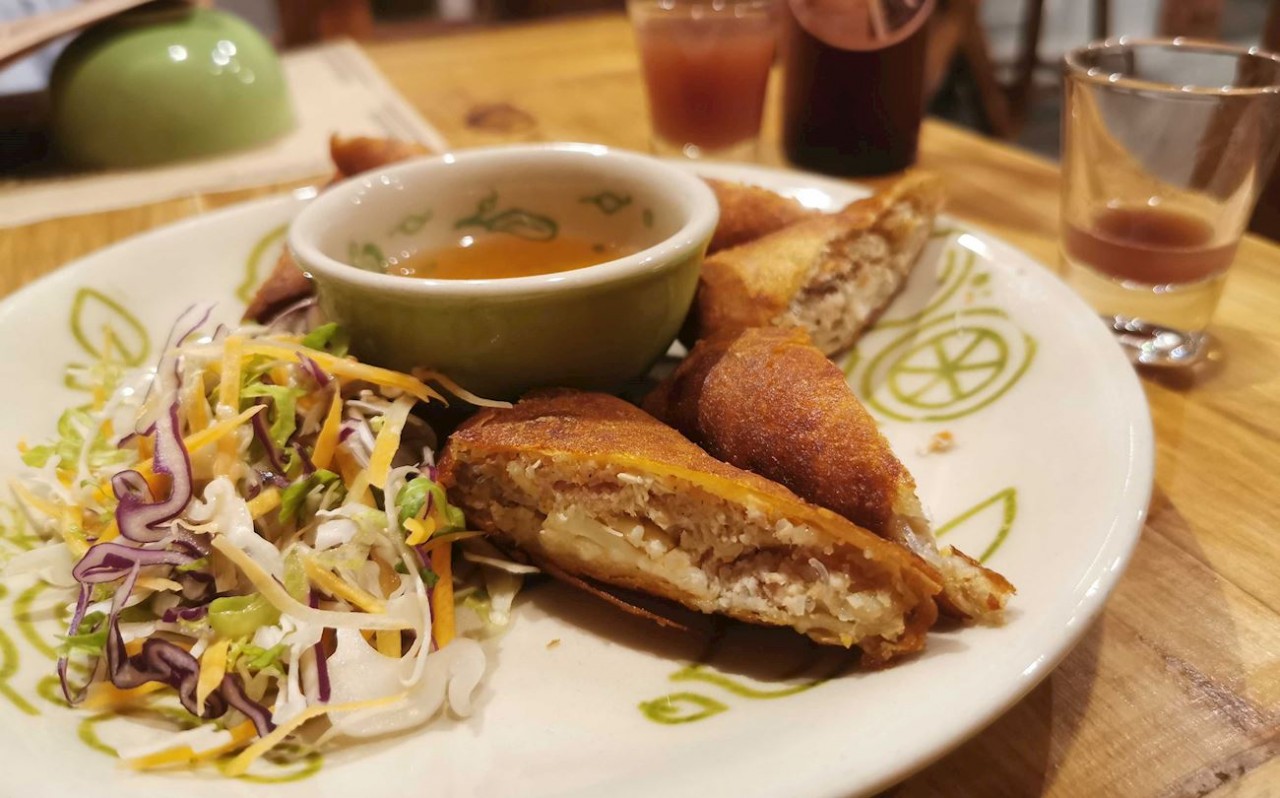 |
| Called Cha Gio in the south, and Nem Ran in northern Vietnam, both names are used to refer to the same dish - fried spring rolls. Photo: Taste Atlas |
Frequent additions to the stuffing include vegetables such as carrots, cabbage, mushrooms, glass noodles, and bean sprouts. The rolls are shortly fried and result in a treat with an appetizing golden color, a thin, crispy, and light outer layer, and a delectable filling.
They are believed to have developed under Chinese influence in Vietnam, but the rolls kept their distinct character and became one of the most common dishes eaten in the country. They are usually served as an appetizer, but can also constitute a satisfying main meal.
Banh Xeo
Loosely translated as sizzling pancakes, "Banh Xeo" is a famous Vietnamese dish that combines crunchy crêpes with a variety of savory ingredients. The distinctive Vietnamese element in these nourishing pancakes is rice flour, which is combined with water, turmeric, and coconut milk or coconut cream to create the thick yellow batter.
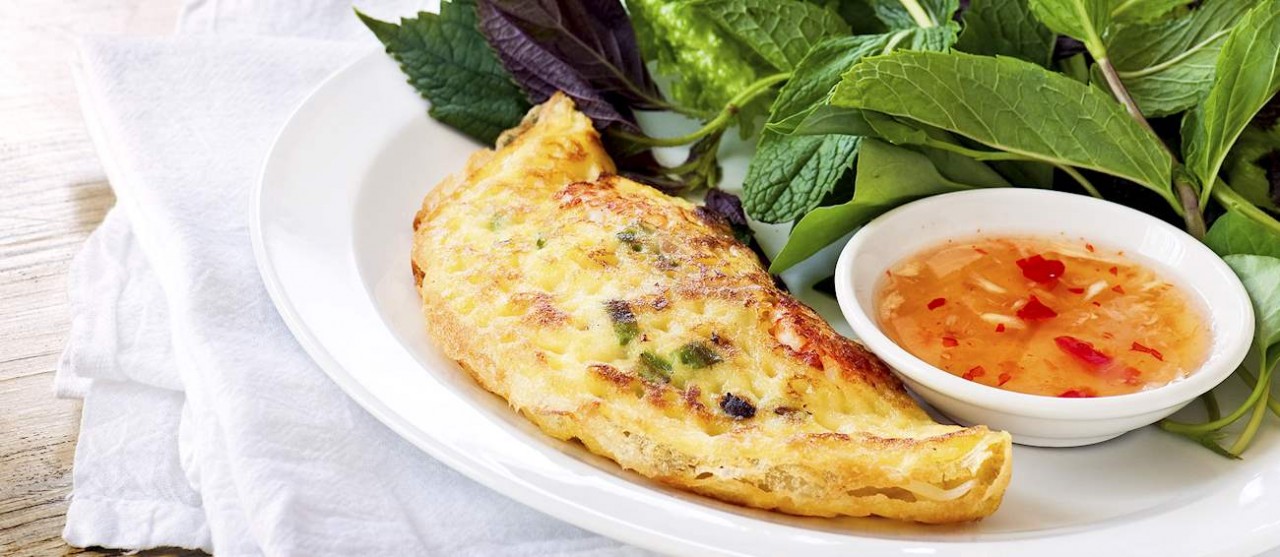 |
| Loosely translated as sizzling pancakes, Banh Xeo is a famous Vietnamese dish that combines crunchy crêpes with a variety of savory ingredients. Photo: Taste Atlas |
Additional ingredients, most commonly scallions, bean sprouts, shrimps, and cubed pork or beef, are sautéed before the mixture is added to the pan. The pancake is pan-fried at a low temperature and gently folded in half, keeping the ingredients safely tucked inside the pancake.
"Banh Xeo" is eaten everywhere in Vietnam, with slight regional differences in ingredients. Traditionally, it is served uniquely, usually complemented with vegetables such as lettuce, carrots, and cucumbers, heavily seasoned with fresh cilantro, mint, and parsley.
Vietnamese Summer Rolls (Goi Cuon)
These crispy summer rolls are prepared by wrapping soaked rice paper (Banh Trang) around various ingredients. Although the most common combinations include meat or seafood - usually beef, pork, shrimp, or crab meat, as well as rice vermicelli noodles - the stars of the dish are fresh and aromatic herbs and vegetables such as mint, cilantro, cucumbers, or mushrooms.
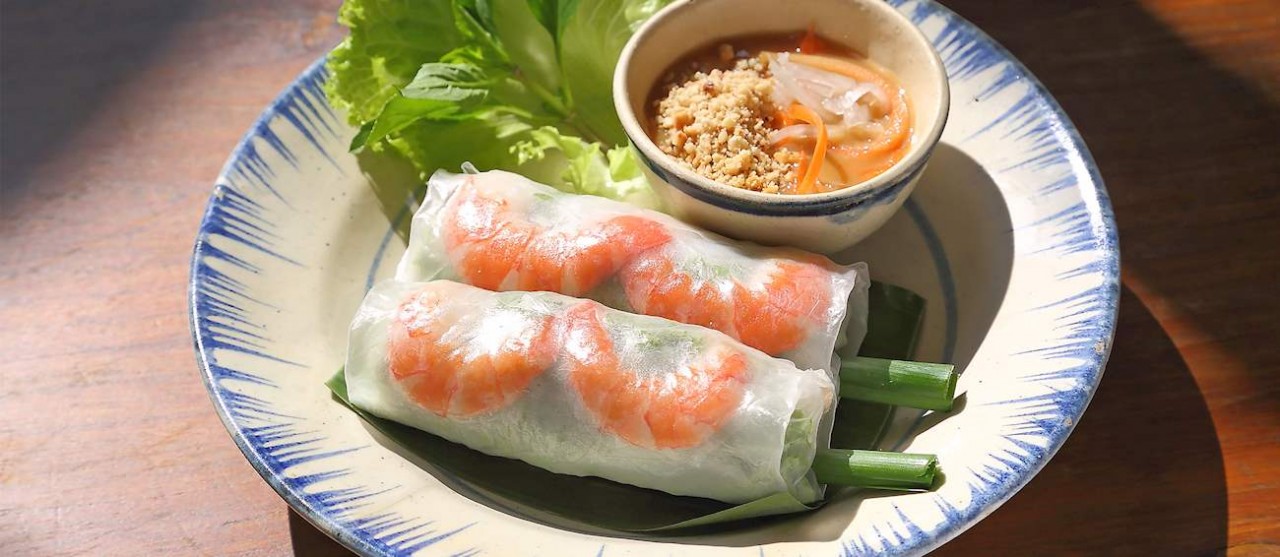 |
| These crispy summer rolls are prepared by wrapping soaked rice paper (Banh Trang) around various ingredients. Photo: Taste Atlas |
The rolls are always served at room temperature or well-chilled, and they're usually accompanied by fish sauce, peanut sauce, or hoisin sauce. Interestingly, these Vietnamese rolls were included in the list of the world's 50 best foods by CNN.
Sugar Cane Shrimp (Chao Tom)
This traditional Vietnamese snack consists of shrimp paste that is wrapped around a sugar cane. The paste is often enriched with garlic, spices, and occasionally pork paste before it is shaped around the cane and then steamed, grilled, or fried.
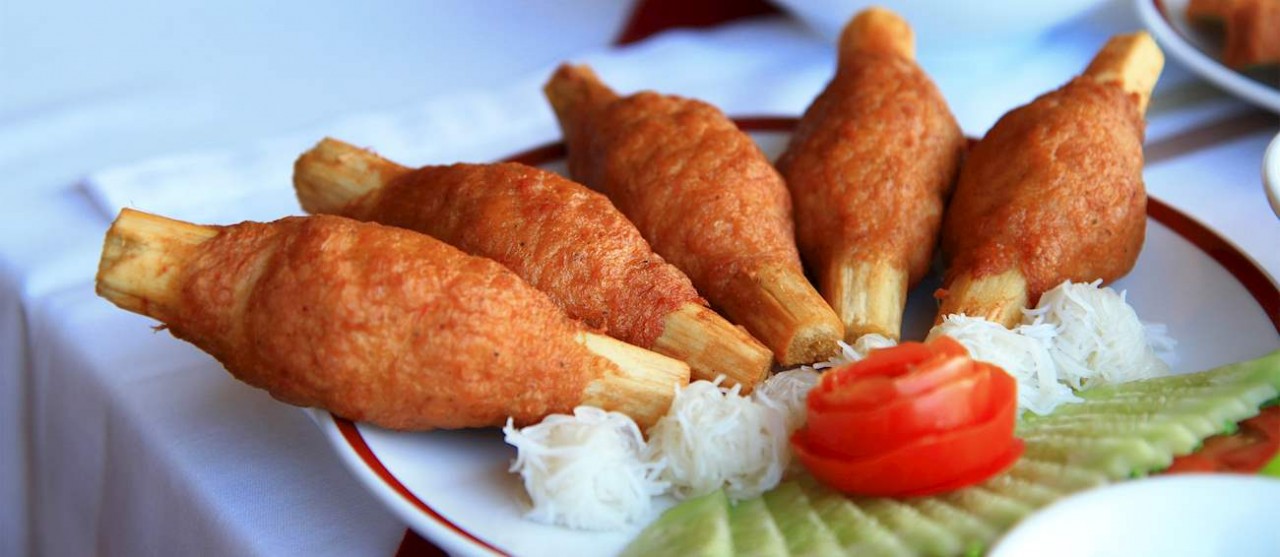 |
| This traditional Vietnamese snack consists of shrimp paste that is wrapped around a sugar cane. Photo: Taste Atlas |
The dish originates from Hue, Central Vietnam, but it is enjoyed throughout the country. Although it was once reserved for special occasions, this delicious combination is nowadays commonly enjoyed as an appetizer or a light snack. The dish can be enjoyed as a whole, but the shrimp can also be taken off the cane, wrapped in lettuce, and then dipped in the dipping sauce
Apart from the dipping sauce, "Chao Tom" is often accompanied by sliced fresh vegetables and rice noodles.
Deep-fried glutinous Rice Balls (Banh Ran)
"Banh Ran" is a popular Vietnamese snack consisting of glutinous rice flour balls that are usually filled with red bean paste and then deep-fried in hot oil. Jasmine flower essence is traditionally used for flavoring the filling, and the crunchy balls are almost always rolled in sesame seeds.
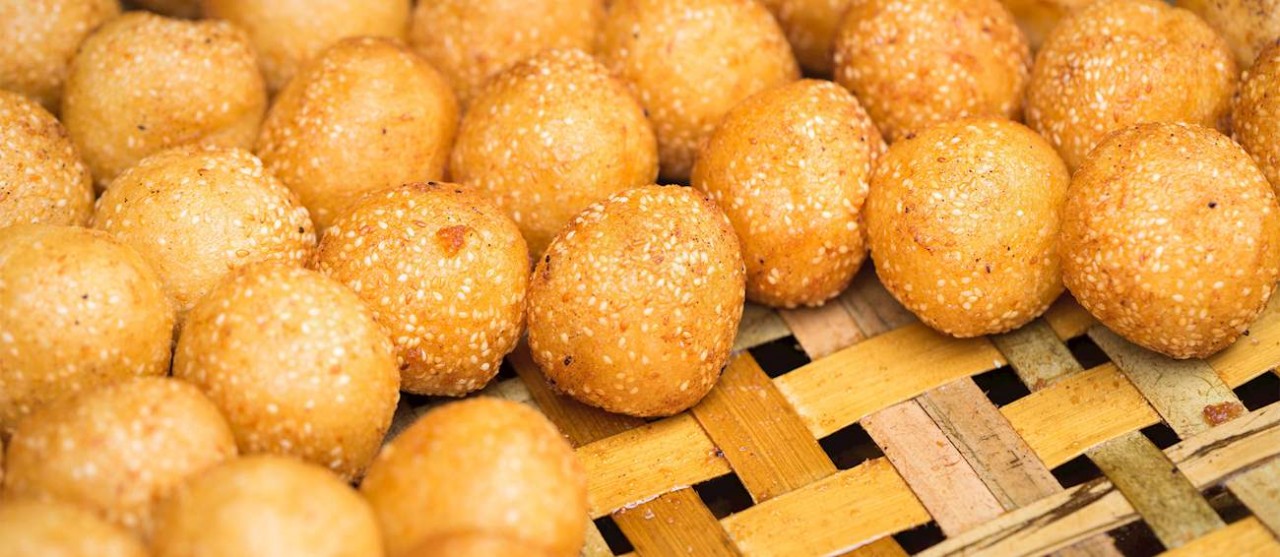 |
| Banh Ran is a popular Vietnamese snack consisting of glutinous rice flour balls that are usually filled with red bean paste and then deep-fried in hot oil. Photo: Taste Atlas |
There is also a savory variety of "Banh Ran" that is oval and usually served with a dipping sauce consisting of fish sauce, sugar, vinegar, chili, and garlic.
Vietnamese Mini Savory Pancakes (Banh Khot)
"Banh Khot" is a savory Vietnamese pancake made with a thin rice flour batter and cooked on outdoor grills equipped with a specialized terracotta Banh Khot mold. The batter is poured into the mold, and the pancake is then topped with various savory ingredients.
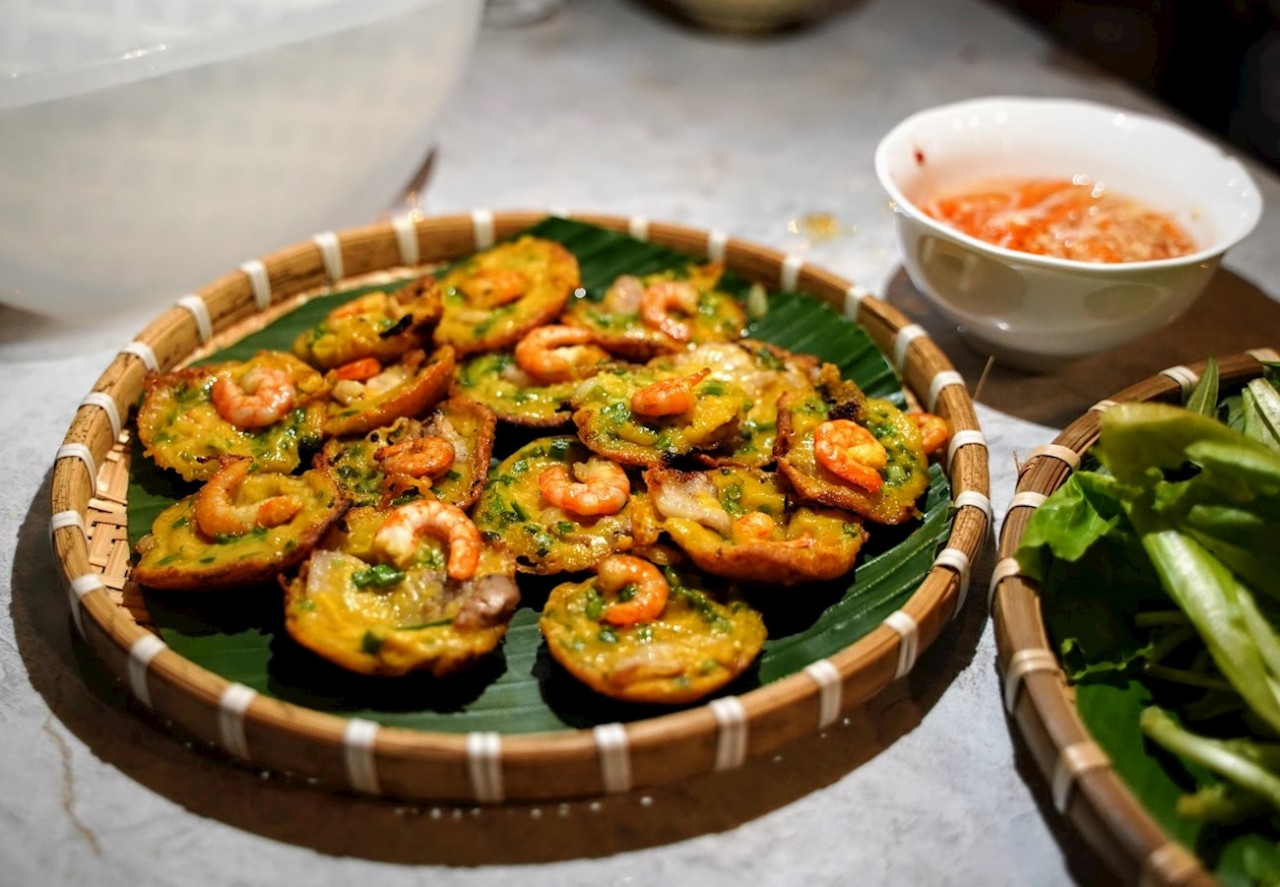 |
| Banh Khot is a savory Vietnamese pancake made with a thin rice flour batter and cooked on outdoor grills equipped with a specialized terracotta Banh Khot mold. Photo: Taste Atlas |
Once prepared, these small puffed pancakes are often served with aromatic herbs and leafy vegetables on the side, which can be used as wrappers. Fish sauce is also a staple accompaniment to "Banh Khot". Although it’s often confused with "Banh Can" (as it’s called in Central Vietnam), "Banh Khot" is not as soft as "Banh Can" because it is fried in oil until crunchy and contains turmeric, which gives it a nice yellow color, while "Banh Can" does not contain turmeric.
 | A Corner of Vietnamese Cuisine and Culture in England Vietcentric introduces Vietnam's rich and unique cuisine through cooking classes, where students learn how to use Vietnamese ingredients and spices to cook traditional dishes. |
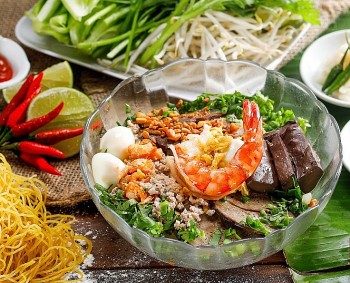 | Michelin Recommends Five Must-Try Vietnamese Dishes Michelin Guide has revealed five local dishes that visitors cannot leave Vietnam without trying. |
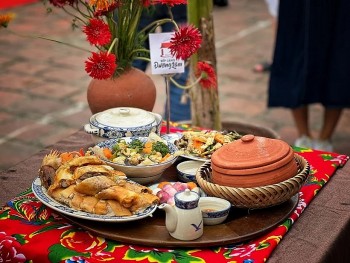 | Duong Lam Cuisine Wins The ASEAN Sustainable Tourism Award At the Southeast Asia Tourism Forum - ATF 2024 on January 26, the Duong Lam village’s traditional cuisine is one of two Vietnamese tourism products ... |
Recommended
 Handbook
Handbook
Vietnam Moves Up 8 Places In World Happiness Index
 Handbook
Handbook
Travelling Vietnam Through French Artist's Children Book
 Handbook
Handbook
From Lost to Found: German Tourist Thanks Vietnamese Police for Returning His Bag
 Handbook
Handbook
Prediction and Resolution for the Disasters of Humanity
Popular article
 Handbook
Handbook
16 French Films To Be Shown For Free During Tet Holiday In Vietnam
 Handbook
Handbook
Unique Cultural and Religious Activities to Welcome Year of the Snake
 Handbook
Handbook
Reflection on Snakes
 Handbook
Handbook





